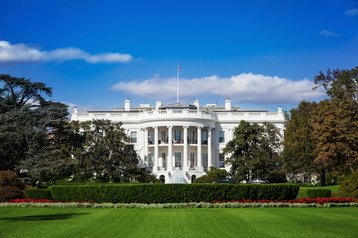The US government has formalized the next stage in its protracted efforts to consolidate its sprawling mass of data centers into a more managable, fiscally responsible number.
The Data Center Optimization Initiative (DCOI), published this week, is the finished version of a draft circulated in March, which builds on previous attempts to minimize the number of federal data centers, and lays out plans for greater efficiency and a shift to the cloud. In principle, US government agencies should not open any new data centers, and use the cloud instead, except in special circumstances.
Lots of data centers, lots of initiative
The 2010 Federal Data Center Consolidation Initiative (FDCCI) and the 2014 Federal Information Technology Acquisition Reform Act (FITARA) led to the closure of more than 1,900 data centers - with ‘data center’ being redefined this year to include tiny locations - bringing nearly $1 billion in savings.
But an Inspector General’s report earlier this year said that the Department of Defense was behind schedule in its data center closure push.
Federal Chief Information Officer of the United States Tony Scott said that the Data Center Optimization Initiative (DCOI) will “accelerate efforts to increase the efficiency of Federal data centers, reduce costs, and improve the overall information technology (IT) security posture of the Federal Government.”
Scott laid out the three primary areas of DCOI:
- Optimization: Agencies will be required to achieve five optimization targets, including the installation of energy metering to track power consumption, a PUE target, virtualization and server utilization metrics, and a facility utilization metric.
- Close Data Centers: Over the three year initiative, agencies are required to close at least 25 percent of their tiered data centers (i.e. large data center facilities) and 60 percent of their non-tiered data centers (i.e. server rooms). This should lead to the closure of around 52 percent of the overall Federal data center inventory and a reduction of around 31 percent in the real estate footprint.
- Cost Savings: The Initiative sets a goal of reducing annual costs by at least 25 percent by the end of fiscal year 2018. In total, this aims to lead to $2.7 billion in cost savings and avoidances over the three year initiative.
To offset the lack of data centers, Scott says that the government will see an “increased use of the cloud,” echoing a report by Deutsche Bank which earlier this year showed that adoption of cloud technologies by the US government was accelerating, with Amazon Web Services as the dominant provider.
Last month, AWS, Microsoft Azure, and Autonomic Resources, all gained FedRAMP certification to hold data in the Controlled Unclassified and Secret categories.
The push has helped build the cloud, but can lead to complications where a data center provider overcharges and refuses to share data.

